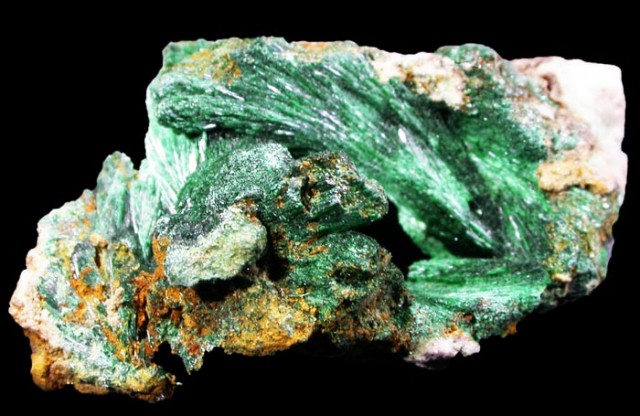
孔雀石:含义、用途和特性
 如果您从未听说过迷人的孔雀石,请允许我们为您揭秘!这种柔嫩的宝石是一种不透明的矿物,主要成分是铜。孔雀石蕴含着强大的能量,具有保护和疗愈的功效。
如果您从未听说过迷人的孔雀石,请允许我们为您揭秘!这种柔嫩的宝石是一种不透明的矿物,主要成分是铜。孔雀石蕴含着强大的能量,具有保护和疗愈的功效。
那么,孔雀石背后究竟隐藏着什么秘密呢?继续阅读,我们将在全面的孔雀石指南中全面介绍其特性和功效。
什么是孔雀石?
孔雀石是一种色彩鲜艳的碳酸铜矿物,以其迷人的色带和螺旋图案所呈现的多种绿色而闻名。
孔雀石于1747年首次被正式列为宝石,但它的存在已有数千年历史。几个世纪以来,它一直被用作铜的来源,但如今已不复存在。由于孔雀石的储量不如以往,如今开采的孔雀石大多用于制作珠宝或凸圆形宝石。
在天体领域,孔雀石与木星和金星息息相关。在占星术中,木星象征着开阔视野和获取新知识。金星则象征着精致和愉悦。孔雀石具有净化思绪、净化情感以及吸收负能量的精神特质,与这两颗行星的感知力息息相关。
你是雄心勃勃的摩羯座或天蝎座吗?好吧,我们为你准备了一颗星座宝石。孔雀石强大而持久的能量,是帮助你保持专注和决心,最终实现最高目标的完美伴侣。
了解了一点孔雀石的背景知识后,现在是时候深入了解它的科学特性了。
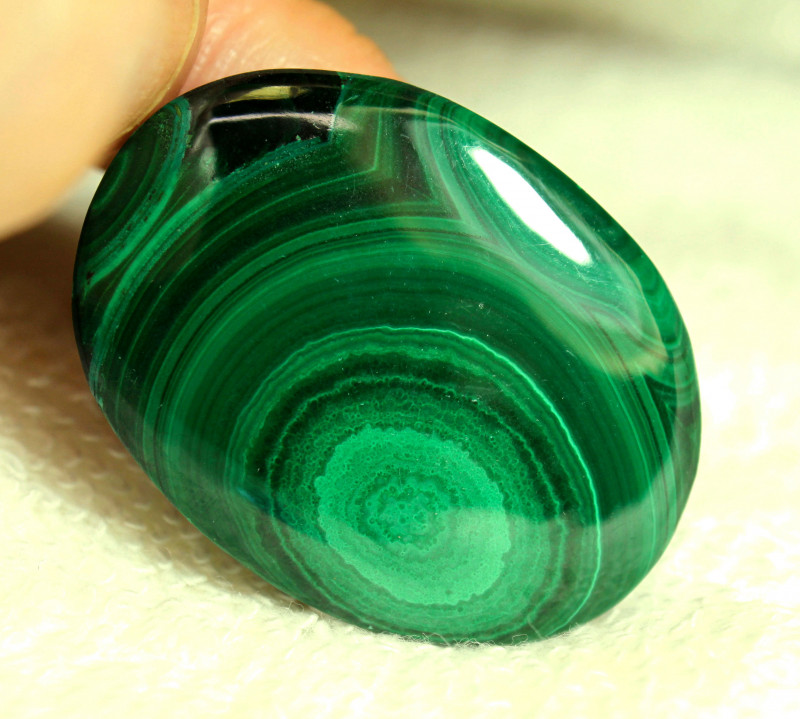
孔雀石规格和特征
孔雀石是一种由碳、铜和氢氧化物组成的不透明矿物。铜占其化学结构的大部分,约占58%。
由于它在铜矿床中非常突出,它被称为“勘探指南”,矿工们经常用它来判断应该在哪里挖得更深。很巧妙,对吧?
在莫氏硬度表上,孔雀石的硬度处于 3.5 至 4.5 的中下水平,大约与一枚铜币一样坚硬。
孔雀石规格
化合物:碳酸铜
莫氏硬度:3.5至4.5
颜色:浅绿色至深绿色(介于两者之间的各种色调)
条痕:浅绿色
晶体结构:单斜
光泽:通常呈丝状;有时呈罕见晶体形式的金刚光泽;有些则暗淡或呈玻璃光泽
透明度:不透明,有时半透明
折射率:1.85
密度:3.6至4.0
乳沟:完美,单向
光学效果:猫眼效应(有时)
现在您已经了解了孔雀石的科学特性,让我们来看看它作为宝石的特殊之处。
孔雀石的颜色和品种
孔雀石拥有绚丽的色彩和纹理,因此可以进行各种切割。由于孔雀石几乎总是呈不透明状态,因此最常见的切割方式是凸圆形和珠状。
优秀的宝石工匠有时会根据宝石的纹路来选择合适的切割方式。带有眼状圆形的孔雀石可以用圆形图案来凸显,例如珠子或鸡蛋。更复杂的条带则更适合雕刻小雕像或其他装饰品。
孔雀石的颜色是其最受欢迎的特质。绿色是由于石中含有铜元素。所有孔雀石都是绿色的,但其颜色范围广泛,从蜜露般的淡绿色到常绿乔木般的深绿色。
孔雀石除了呈现绿色外,其独特的色带也是其一大特征。色带,又称色域,是指整块宝石的颜色分布不均匀。
孔雀石的色带通常呈现迷人的同心圆,类似于树的年轮,相互扭曲和螺旋。
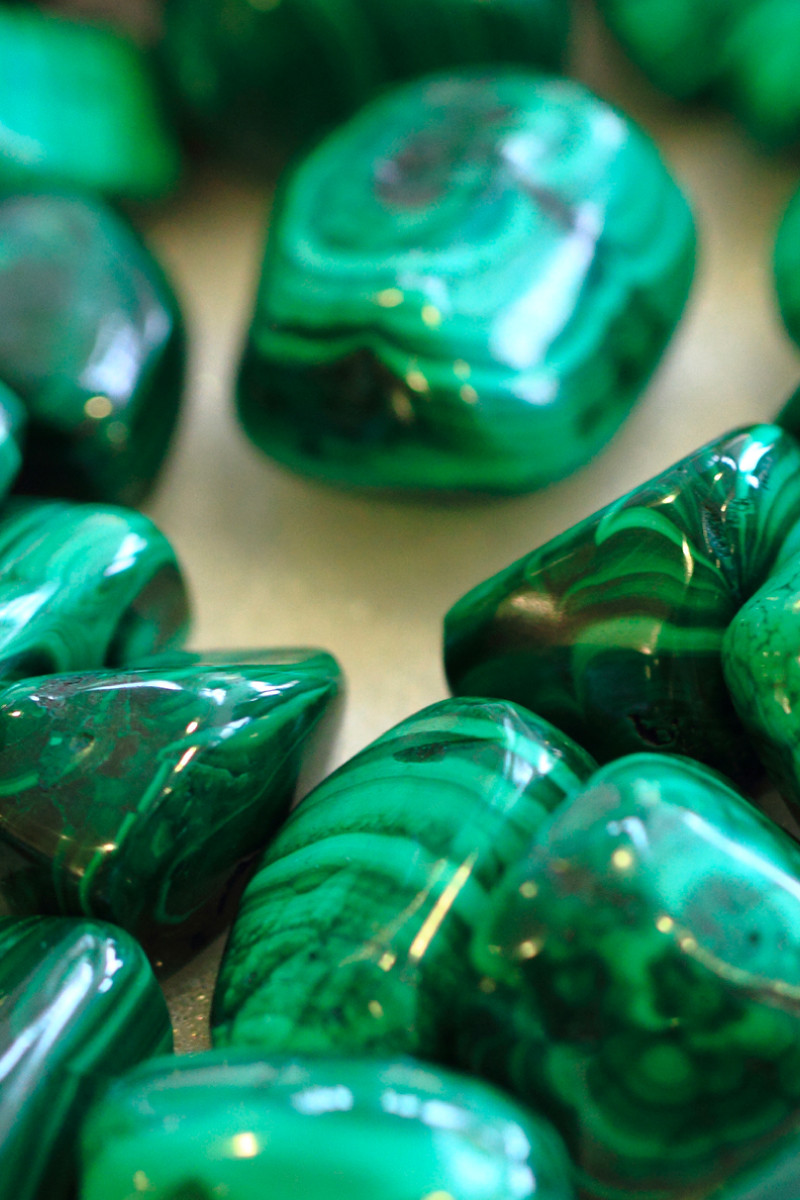
这些色带的深浅差异实际上是由于晶粒大小不同造成的。在放大镜下,浅色部分呈现出纤细的纤维状晶体。深色部分则较为粗糙,因此肉眼很容易看到其中的矿物颗粒。
有时这些颗粒不是孔雀石,而是宝石内含物或其他矿物。
一些与孔雀石交织在一起的宝石包括绿松石或硅孔雀石。另一个值得注意的组合是蓝铜矿-孔雀石,也称为蓝铜矿孔雀石。
蓝铜矿是另一种与孔雀石相邻生长的碳酸铜矿石,有时还会与孔雀石形成条带。蓝铜矿的蓝色与孔雀石的绿色交相辉映,形成了一种令人惊艳的宝石,宛如从太空俯瞰地球。
这些宝石以及典型的孔雀石根据其克拉重量具有不同的价值。
尺寸和形状
对于孔雀石来说,克拉重量会影响抛光件的价格,但影响因素并不那么简单。由于孔雀石透明度太低,无法进行刻面,其克拉重量的重要性不如其他宝石。
孔雀石的价格也更高。成捆的孔雀石(也称为包裹)有时比单颗孔雀石更便宜。这类似于在杂货店批量购买宝石的理念。
孔雀石的历史
数千年来,孔雀石的用途多种多样。自公元前4000年孔雀石开始为人所知以来,人们用它来雕刻雕塑、装饰珠宝,甚至制作绿色颜料等等。
事实上,公元前 2300 年的作家 Ptahhotep 在他的《智慧教诲》中分享建议时引用了它:
知识无止境,无人能臻于完美。良言比孔雀石更隐秘。
孔雀石作为一种装饰元素,经常出现在皇室殿堂中。在俄罗斯,由沙皇亚历山大一世下令建造的标志性建筑圣以撒大教堂,其八根柱子上就覆盖着孔雀石。在曾居住过许多俄罗斯皇帝的冬宫,甚至有一整间孔雀石室,里面装着约40万磅孔雀石!
孔雀石作为颜料的使用可以追溯到古埃及。除了古埃及人用它来制作珠宝和雕塑外,它还是制作绿色颜料的关键颜料。正因如此,埃及墓穴中的绘画通常都含有孔雀石。
然而,这种绘画潮流并未止步于埃及。作为几个世纪以来唯一的绿色颜料来源之一,孔雀石在17、18世纪的欧洲绘画中也随处可见。
然而,它并非仅仅挂在墙上。古埃及人、希腊人和罗马人都用这种石头来装饰自己,比如绿色眼影(称为眼影膏)和孔雀石护身符。虽然我们确信他们的妆容很精致,但孔雀石粉吸入后有毒。所以,如果你想效仿他们,我们建议你佩戴护身符。
美洲原住民是另一个利用孔雀石力量的群体,他们制作精美的孔雀石珠宝来增强他们与精神领域的联系。
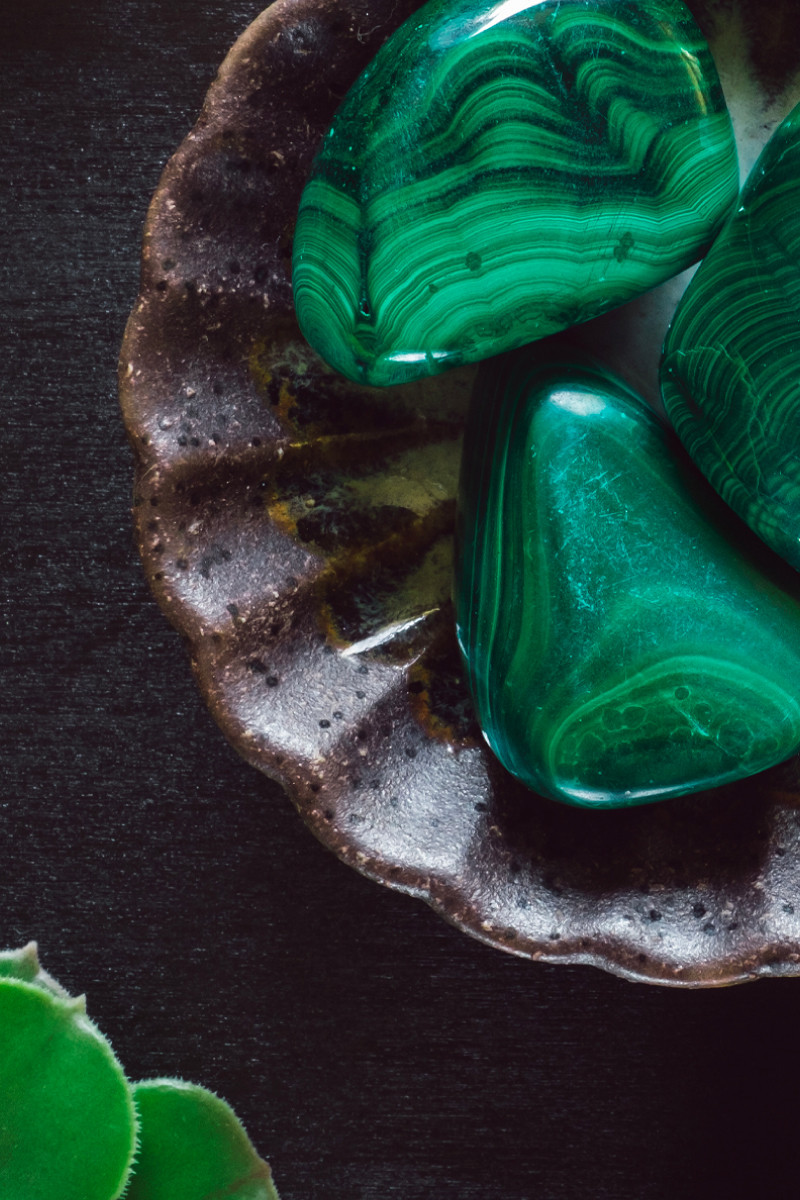
现代用途
人们对孔雀石的推崇至今仍未消退。听说过世界杯吗?或许你不知道,独一无二的国际足联世界杯奖杯上就镶嵌着孔雀石。自1974年以来,这座独一无二的奖杯就因其全金结构和底部镶嵌的绿色孔雀石环而备受推崇。
对我们大多数人来说,幸运的是,无需赢得比赛就能接触孔雀石。许多人喜欢它的精神属性,或者仅仅是因为它的魅力,适合制作孔雀石首饰。
孔雀石的精神含义是什么?
孔雀石的含义
孔雀石的名称与许多其他宝石名称一样,源自古希腊语。
这个名字源于两个古希腊词: malachitis(锦葵)和malakos (柔软)。malachitis 指的是一种绿叶植物,我们称之为锦葵;malakos 的意思是“柔软”。这是有道理的,因为孔雀石与锦葵植物具有相同的绿色色调,并且硬度相对较低。
从精神层面来说,孔雀石被称为“转化之石”,因为人们相信它能够帮助佩戴者摆脱自我毁灭的习惯,并指引其通往自我提升的道路。孔雀石的其他精神特质还包括提供保护、智慧以及对新体验的开放态度。
我们已经探索了孔雀石的形而上学特性,现在是时候应用它们了。孔雀石有什么用处?
其他社会则利用孔雀石的玄学特性。他们相信佩戴孔雀石可以抵御有害的外力,无论是物理的还是超自然的。例如,中世纪的人们佩戴孔雀石是为了抵御邪眼和巫术。
孔雀石的精神和治疗特性
孔雀石的疗愈功效主要集中在深层内在的创伤上。它可以帮助我们克服阻碍我们前进的障碍:执着于恐惧,或对自己身份和能力的局限性信念。
从更字面意义上讲,孔雀石的物理治疗功效可以缓解关节炎、高血压、痛经和哮喘等深层内部疾病引起的疼痛。
孔雀石还可以治愈情绪,其中一种方法是通过脉轮治疗。
孔雀石主宰哪个脉轮?孔雀石是激活或平衡太阳神经丛脉轮的绝佳宝石。当你不断感到困惑、困惑或对他人的看法感到焦虑时,就说明这个脉轮被阻塞了。
孔雀石可以打开脉轮,重拾自信,令你更加活力四射、富有表现力。将孔雀石放置在胸骨附近,让它吸收你内心积聚的所有情绪,它能带来疗愈,并让你拥有掌控命运的感觉。
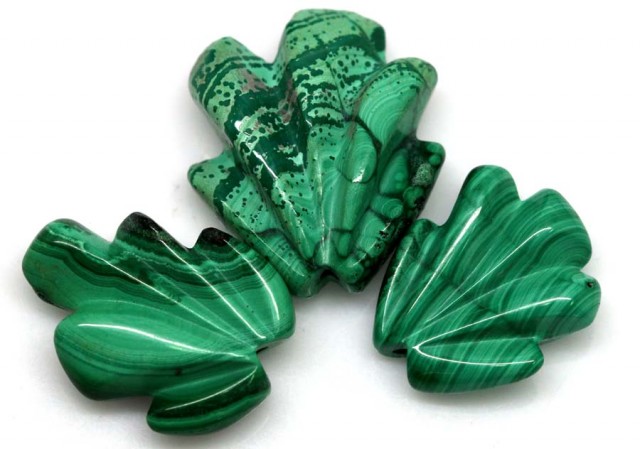
孔雀石的起源和来源
孔雀石矿几乎都位于铜矿床的风化带。风化带是指矿床上方受水、风和压力等因素侵蚀的区域。
孔雀石也是一种次生矿物,而非原生矿物。原生矿物是在岩石首次结晶时形成的。风化作用会改变这些矿物的化学成分,直到形成新的次生矿物。
就孔雀石而言,这种矿物的形成方式有两种:水和碳酸盐的溶液会改变含铜的岩石,或者水和铜矿物的溶液会改变碳酸盐岩。
你经常会在石灰岩内部或与其他铜矿物(例如蓝铜矿和硅孔雀石)一起发现孔雀石。那么,世界上哪里可以找到这些呢?
矿床
一些主要的孔雀石矿位于刚果民主共和国、纳米比亚、澳大利亚、法国、以色列和美国
历史上,最大的孔雀石产地是俄罗斯、以色列和埃及。然而,这些矿场大多已枯竭。如今,最丰富的孔雀石供应来自刚果民主共和国。几乎所有用作宝石的带状孔雀石都产自这里。
亚利桑那州是美国孔雀石的主要产地,但邻近的新墨西哥州和犹他州也产有孔雀石。
无论产自何处,孔雀石都是值得拥有的珍贵宝石。为了确保您的孔雀石尽可能长久保存,了解如何保养它至关重要。
孔雀石的保养和维护
孔雀石对热极其敏感,因此,这是保养孔雀石的首要关键要素。幸运的是,它那绚丽的绿色不会因光照而褪色。
为了保护您的孔雀石,最好避免将其暴露在以下环境中:
热量,包括热水
自来水
超声波清洗机
硬撞击
弱酸
更坚硬的宝石
孔雀石可以每天佩戴吗?当然可以!但是,它可能会更快失去光泽。另一个需要考虑的因素是你居住的地方。如果你住在高温地区,孔雀石对热的敏感性可能会导致它因每天在户外佩戴而老化。
如果您担心孔雀石会破碎,您可以寻找涂有蜡或树脂的石头,这样就不会那么容易破碎。
关于如何清洁孔雀石,我们建议使用蒸馏水冲洗掉灰尘或碎屑,然后让其风干。
那些用宝石进行灵性修行的人可能会问:孔雀石需要清洁吗?是的,随着时间的推移,宝石吸收的负能量会堵塞孔雀石,所以我们建议定期清洁。
清洁孔雀石的方法有以下几种:
将其放在透明的石英石上并放置过夜
在碗里倒入足量的海盐,形成一层底层,然后将孔雀石放在上面。在月光下放置一夜。
将孔雀石埋入肥沃的土壤中,放置2-3天。
用鼠尾草烟雾熏烤石头。
你对孔雀石感兴趣了吗?如果是的话,你可能想了解一下它的市场价格。
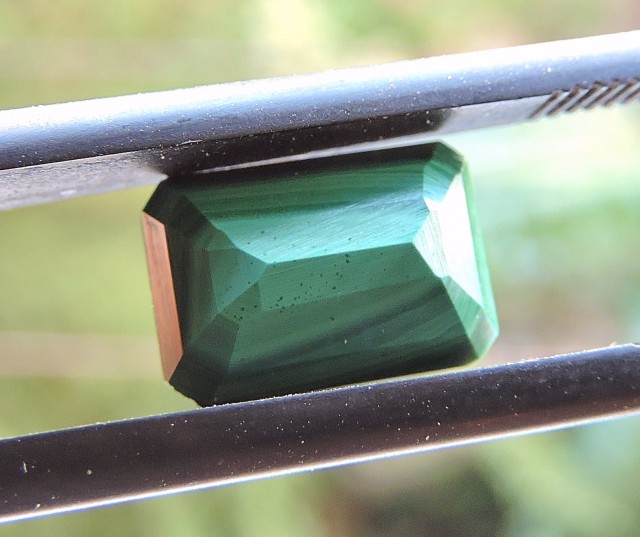
孔雀石的价格和价值
孔雀石贵吗?由于孔雀石储量丰富,价格非常实惠。每克拉孔雀石的价格通常在1到3美元之间。批发价较低,而零售价较高。
孔雀石的价值会随着其稀有特性的展现而提升。例如,以独特方式生长的孔雀石,例如在另一块岩石内部或异常晶体结构中生长的孔雀石,通常价值更高。呈现猫眼效应(或称“猫睛” )的孔雀石,价格也会更高。
最昂贵的孔雀石通常个头较大,并展现出一些独特的特征。这些孔雀石的重量在3000克拉到32000克拉之间,价格在500美元到3000美元之间。不过,大多数孔雀石的价格都在50美元以下。
流行的切割方式,例如凸圆形宝石或孔雀石滚石,通常成捆出售,价格约为 20-40 美元。
底线是什么?很容易找到适合您的形状和尺寸且价格合理的孔雀石。
准备好进行精神上的复兴了吗?
关于孔雀石,你需要知道的就这么多!现在你了解了孔雀石的含义和用途,你就能明白为什么这种宝石一直受到从古代皇室到普通宝石收藏家的喜爱了。
孔雀石在历史长河中,也经历了漫长的演变,最终融入现代社会。虽然我们不再像古埃及人那样将其用作眼影,但我们仍然可以佩戴孔雀石手链或孔雀石滚石,沉醉于它的美丽,并以此冥想。
如果您一直在寻找一种自我反省的工具,孔雀石的变革力量可能会帮助您提高自我意识,清楚地了解您的感受,并开始您走向积极改变的旅程。
正如马可·奥勒留所说:“灵魂被思想的色彩所染色。”
如果您的灵魂需要净化更新,孔雀石的治愈绿色能量可以为其注入活力,就像春天盛开的锦葵植物一样。
想要焕发活力?今天就买一块孔雀石吧!
搜索Gemstone Encyclopedia
最新的文章
彩虹格纹日光石是一种长石,由于内部含有各种包裹体,呈现出三种绚丽的光学效应。它绚丽多彩的光泽和格纹图案使其成为收藏家梦寐以求的珍宝!
12th Jan 2026
文章分类
How To's is where you will find helpful articles from gem Rock Auctions on how to cut gemstones, select gemstones and buy gemstones.
9文章数

